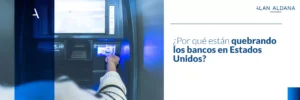There is one ultimate law when dealing with human beings. When an individual is well and enjoys the full exercise of his rights, everyone around him is well. However, when someone feels that his fundamental guarantees have been violated, the whole environment is considerably affected.
The violation of human rights is a process of social deterioration and impedes the growth and evolution of each individual. and consequently of the collective. Among the categories of these rights that have been most violated throughout human history are race, ethnicity and social status. Evidence of this is the appearance of the Declaration on Race and Social Prejudice, adopted by the United Nations General Conference on Education, Science and Culture on November 27, 1978.
Its proclamation was in response to the events of violation of human dignity of World War II and its intention was to secure universal respect for justice, for the rule of law and for the human rights and fundamental freedoms which are affirmed for the peoples of the world, without distinction of race, sex, language or religion, by the Charter of the United Nations.
The Statement on Race and Social Prejudice
This document guarantees "the intrinsic unity of the human species and, consequently, the fundamental equality of all human beings and all peoples, recognized by the highest manifestations of philosophy, morals and religion, which reflect an ideal towards which ethics and science converge today". Likewise, the declaration expresses the awareness of those who drafted it about the events of colonization and historical changes experienced by various peoples in the world.
The resolution signed in Paris has the fundamental objective of promoting and protecting human dignity. It is based on the premise that every individual is born equal in dignity and rights. It also safeguards the principle that all individuals and groups have the right to be different, to consider themselves and to be considered as such, taking into account that the diversity of ways of life and the right to be different can in no case serve as a pretext for racial prejudice, nor legitimize any discriminatory practice.
In this sense, the Declaration assumes that all the peoples of the world are endowed with the same faculties. that allow them to achieve intellectual, technical, social, economic, cultural and political development.
Wherever racism is found
The paper identifies racism as encompassing racist ideologiesThe following are some of the most important factors that contribute to racial inequality: attitudes based on racial prejudice, discriminatory behaviors, structural arrangements and institutionalized practices that lead to racial inequality.
As a fundamental part of this treaty, it establishes that all States assume the primary responsibility in the application of human rights and fundamental freedoms by all individuals and human groups, in conditions of full equality of dignity and rights. It is important to emphasize that the equality in dignity and rights of all human beings without distinction of race, color or origin is a principle accepted and recognized by international law, so that any violation entails international responsibility.
This year, the United Nations launched the campaign The campaign, "Las apariencias engañan ¡Luchemos contra el racismo!", in an attempt to raise awareness about the importance of respecting and elevating human dignity. It is designed to promote action in stopping racism, xenophobia and xenophobia in every community, which is why it urges anyone to visit the website: https://www.un.org/es/letsfightracism/ and undertake some task to support the work.
The call to action includes commenting on Facebook and Twitter. what is the activity undertaken to fight against racism, using the label #CombatingRacism and volunteer to join a racial minority rights or human rights advocacy group.













